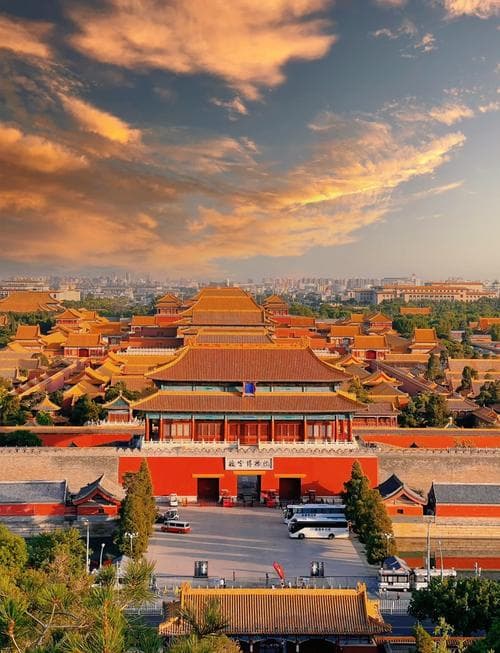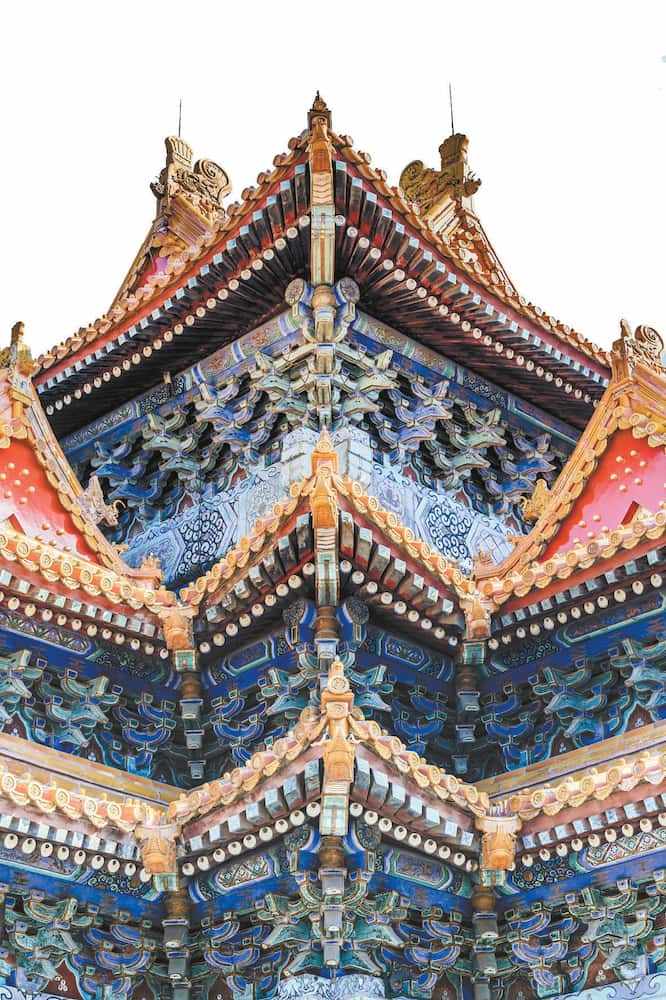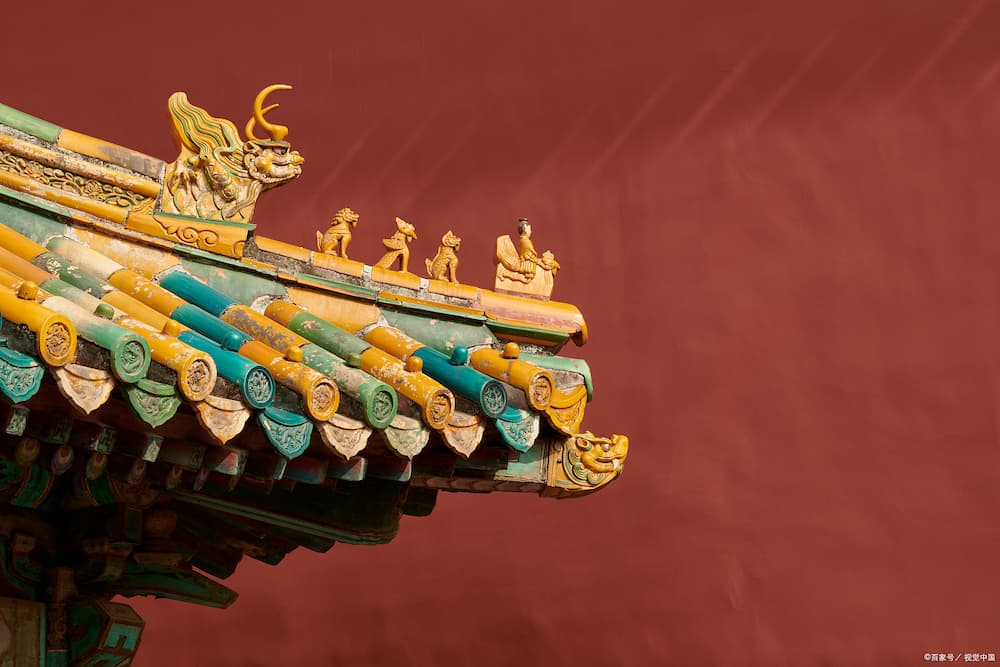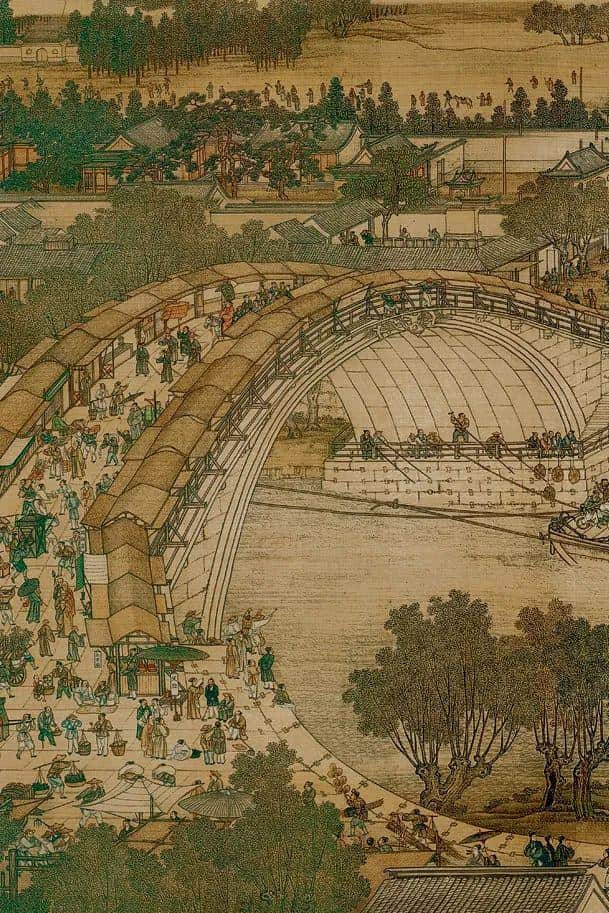Forbidden City Beijing: Ultimate Travel Guide & Insider Tips
Preface: a palace, a history of Chinese civilization
Standing in Tiananmen Square, looking north, that a brilliant temple complex is the world’s largest existing, best-preserved wooden structure of ancient architectural complex – the Forbidden City in Beijing. Built in 1406, the Forbidden City has been under the rule of 24 emperors of the Ming and Qing dynasties, and has witnessed the vicissitudes of Chinese history for nearly 600 years. 1987, the Forbidden City was inscribed on the UNESCO World Cultural Heritage List, and has become a common cultural treasure of all mankind. This article will take you to explore this “sea of temples”, from the historical lineage to the architectural wisdom, from the must-see treasures to practical tips, all-round interpretation of the charm of the Forbidden City.
I. Overview of the Forbidden City: The Shock Behind the Numbers
The Forbidden City covers an area of 720,000 square meters, equivalent to the size of 100 standard soccer fields. The entire palace is composed of two parts: the outer court and the inner court, the outer court is centered on the Hall of Supreme Harmony, the Hall of Central Harmony and the Hall of Baohe Temple, which is the place where major ceremonies are held; and the inner court is centered on the Palace of Qiangqing, the Palace of Jiao Tai and the Palace of Kun Ning, which is the living area where the emperor and the consort live. According to statistics, the Forbidden City, a total of 8707 rooms (taking the “Emperor’s residence between” meaning), surrounded by a 10-meter-high wall and 52-meter-wide moat, forming a tight defense system.

II. Architectural Miracle: Every Detail is a Cultural Code
- Cosmology of the central axis layout
The Forbidden City strictly follows the concept of “Zhou Li – Kaogong Ji”, which is “the front and back of the city, the left ancestor and the right community”, with a north-south axis running through the whole city. The axis starts from Yongding Gate in the south, passes through Qianmen Gate, Tian’anmen Gate, Duanmen Gate, Wumen Gate, Taihe Temple, Qianqing Palace, Shenwumen Gate, and ends at the Bell and Drum Towers in the north, with a total length of about 7.8 kilometers, which symbolizes the authority of “the king in the center”. 2018 measurement found that the axis of the Forbidden City and the Earth meridian line only deviates from the meridian line by 2 degrees and 13 minutes, which demonstrates the amazing measurement technology of the ancient artisans. - The earthquake-resistant wisdom of mortise-and-tenon structure
All the buildings of the Forbidden City are made of mortise and tenon structure, without using a single nail. The columns of the Hall of Supreme Harmony are buried deep underground with a “side foot” design, and there is a “pipe foot mortise and tenon” between the base of the column and the foot of the column, which makes the building extremely earthquake-resistant. According to records, in 1679, Beijing 8 earthquake, the Forbidden City complex intact. Modern experiments have proved that this structure can withstand a magnitude 9 earthquake. - Grade code of color and decoration
The roof of the Forbidden City is covered with yellow glazed tiles, because yellow belongs to the earth in the five elements, which is located in the center and symbolizes the imperial power. The number of small beasts on the eaves is set in strict accordance with the rank, the Hall of Supreme Harmony has 10 (the only one in the country), the other halls in descending order. Qianqing Palace in front of the sundial, the amount of Jia and other furnishings, highlighting the emperor’s “granting the time to award” the power.


III.The treasures you can’t miss
- Paintings and Calligraphy
Qingming Riverside Scroll (Zhang Zeduan, Northern Song Dynasty): a 5.29-meter-long silk scroll depicting the prosperity of Bianjing (now a rotating artifact).
A Thousand Miles of Rivers and Mountains (Wang Ximeng, Northern Song Dynasty): the pinnacle of blue-green landscapes, with the use of precious mineral pigments throughout.
Lanting Preface copy (Feng Chengsu, Tang Dynasty): known as the “world’s first line of calligraphy” accurate reproduction - Palace Artifacts
Golden Ou Yonggu Cup (Qianlong, Qing Dynasty): dedicated to the Emperor’s New Year’s Day opening ceremony, inlaid with 11 pearls and precious stones.
Jade Mountain of Dayu’s Ruling of the Water (Qing Dynasty, Qianlong): a huge jade sculpture weighing 5 tons, which took 10 years to make.
Bronze and gold-plated autoharp (Qing Dynasty): a mechanical masterpiece combining Chinese and Western elements, capable of playing 12 pieces of music. - Architectural Art
Hall of Supreme Harmony coiled dragon algal well: the center of the golden dragon mouth Regulus mirror, surrounded by auspicious cloud patterns.
Plaque of “Great Light” in Qianqing Palace: the place where the Yongzheng Emperor stored the edict of succession after he established the secret system of establishing the Crown Prince.
Nine Dragons Wall (Ning Shou Palace area): a colorful relief wall made of 270 pieces of glaze.

IV. in-depth experience route recommendations
- Classic half-day tour (about 3 hours)
Noon Gate→Wuying Hall (Painting and Calligraphy Hall)→Taihe Gate→Taihe Hall→The Hall of Supreme Harmony→The Hall of Central Harmony→The Hall of Baohe→Qianqing Palace→The Hall of Intercourse→Kuning Palace→The Imperial Garden→Shenwumen - Essence full-day tour (6-8 hours)
Add route: East Sixth Palace (Clock and Watch Museum, Treasure Museum) → Ning Shou Palace Area (Nine Dragon Wall, Chang Yin Ge) → West Sixth Palace (Chang Chun Palace where Empress Dowager Cixi lived) - Photography route
Sunrise shooting point: Jingshan Wanchun Pavilion (overlooking the panoramic view)
Detailed shooting point: Ci Ning Palace carved stone fence, corner tower reflection, red walls and bamboos.
V. Practical Tour Guide
- Tickets and opening
High season (4.1-10.31): 60 RMB/person Low season (11.1-3.31): 40 RMB/person.
The Jumbo Museum / Clock Museum each requires an additional 10 yuan admission fee.
Opening hours: 8:30-17:00 (high season), closed at 16:30 (low season), closed on Mondays - Best Season
Spring and fall (April-May, September-October): pleasant weather, especially famous for ginkgoes in fall.
Winter: fewer tourists, beautiful snow scene (need to pay attention to the weather forecast) - Intelligent tour tools
Official Electronic Explainer (20 RMB/table, support 40 languages)
The “Palace Museum” small program provides high-definition interpretation of cultural relics.
AR navigation to avoid getting lost - Notes
Daily flow is limited to 80,000 people, it is recommended to make reservations 7 days in advance.
Lighters and other dangerous goods are prohibited, and there are strict security checks at the entrance.
Please do not touch the exhibits or lean on the railings to protect the ancient buildings.
Strolling through the Forbidden City, the golden bricks (Cheng mud bricks specially supplied by Suzhou) under your feet have printed the footprints of emperors and kings, and the wind chimes on the eaves still echo with the residual sound of history. This is not only a tourist attraction, but also a living museum, where every brick and tile tells of the splendor and wisdom of Chinese civilization. When you look back through the Shenwu Gate, the majestic palace is no longer a cold complex, but a cultural bridge connecting the ancient and the modern, waiting for your next in-depth exploration.